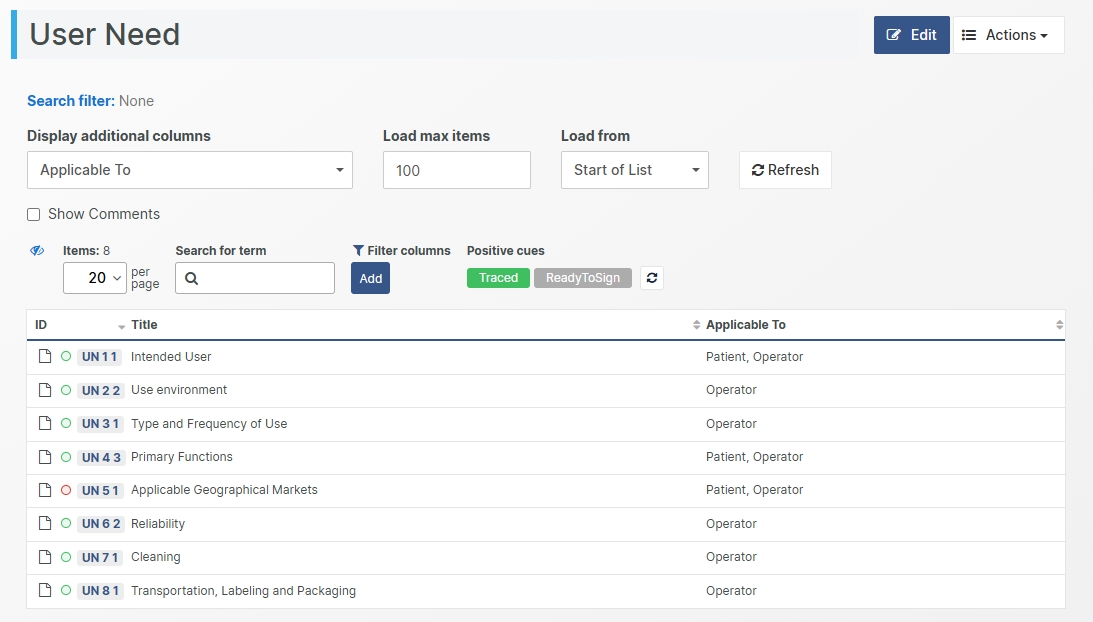List View
A Document Object in a Chapter can be displayed in a List View. This tabular form lists the Document Objects together with their attributes. The Filter, Search and Sort options help you work with the set.
Inline Editing of Document Objects in the List
To activate Edit mode, click the Edit button. This will display edit controls for the attributes currently selected in the Display additional columns-dropdown, click Refresh and lock the currently listed Document Objects for editing by clicking Edit.

Use the edit controls to edit the attributes of the Document Objects listed. When completed, click Save to save your changes. A Gap Form will be displayed. Enter a change comment that will be used for all modified Document Objects.
(Search) Filter and Sorting
Click on the Filter caption to narrow down the displayed Document Object set according to your selected filter criteria. Use the dropdown and the Plus button to add filter criteria and set the value for each criterion. The filter criteria are applied using an AND mechanism.
Sorting is done by clicking on the sorting glyphs next to the column caption.
Display additional columns
Use the Display additional columns dropdown to select which attributes and data to display for each Document Object in the table. Click Refresh after having updated the value.
Load Max Items
Use the Load Max Items option to limit the number of items to be fetched from the database. This option is particularly useful when loading items from external systems that might suffer from limited performance issues. Click Refresh after having updated the value.
Load From Start / End
Use the Load From option to specify if items shall be loaded from the start or end of the list of available items. This option is particularly useful when loading items from extremely large sets from external systems. Click Refresh after having updated the value.
Search for term
Further refine the yielded set by using the search-as-you-type filter text box, searching for any part of a word in displayed in the grid.
Filter Columns
Use the Filter Columns Add button to further refine the yielded set by filtering on one or more columns to find items of interest.
Paging Options
Use the Paging Options to specify the number of items to display on the current page and to navigate to other pages in the list.
Navigate between Pages
Toggle between pages using the numbered buttons on the right side above the result grid to navigate between the pages.
Inspect Document Object "health" using Positive Cues
Just like in the Chapter View, Positive Cues can be used to inspect the Document Objects "health" status. The coloured does next to the Document Object ID indicates an aggregated inconsistency state called Positive Cues.

Read more about Positive Cues here.
Actions in the List View
The Actions button supports the following operations
Add Document Object
Modify Multiple Items
Display Inconsistencies
Display Consistency Coverage
Display Charts
Set Snapshots
Add Tags
Lock Document Objects
Generate Word Report
Generate Template based Word Report
Generate Excel Report
Export Document Objects
Import Document Objects
Document Object types that have File Attributes also have the options:
Save Files to Disk
Save Files as PDFs
